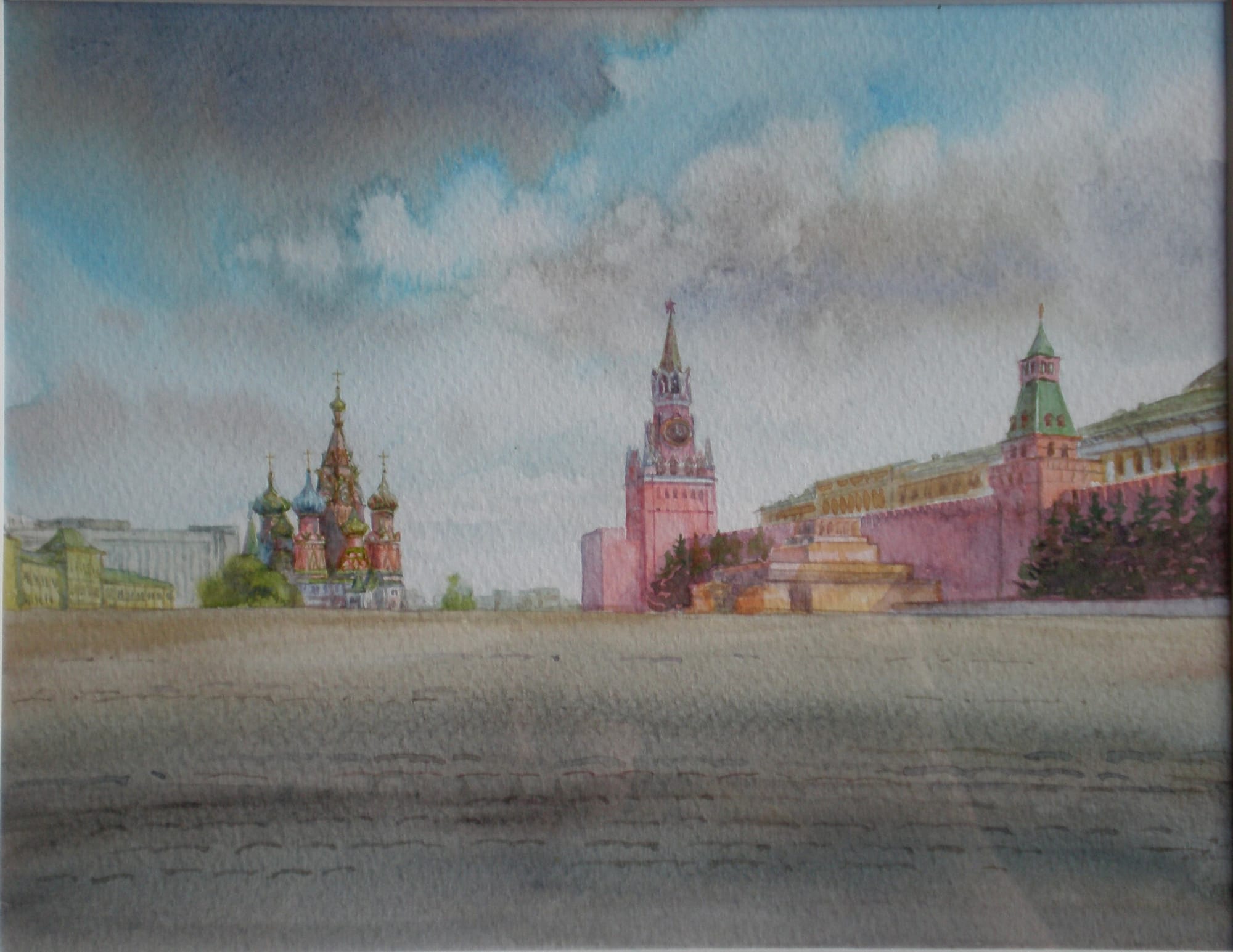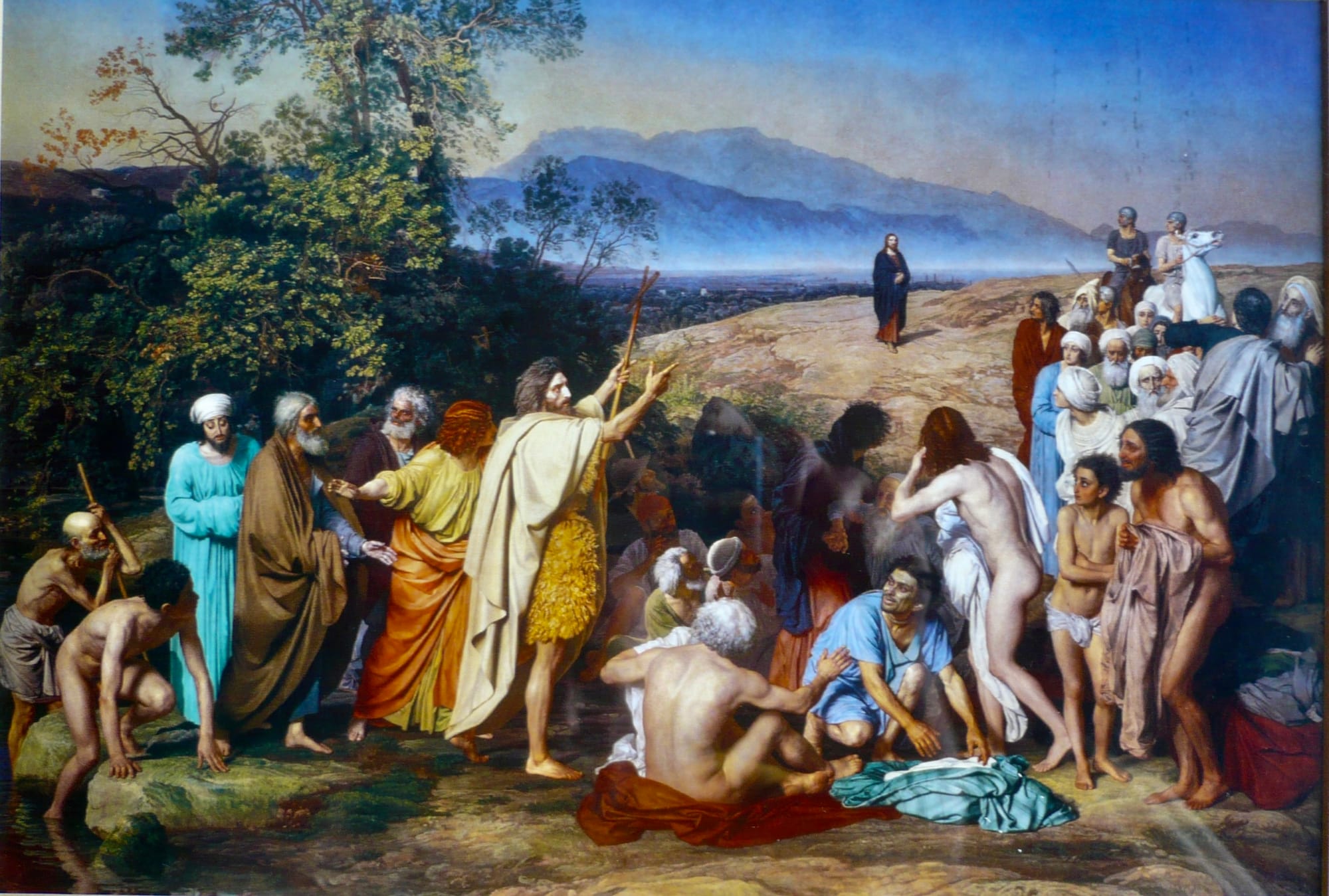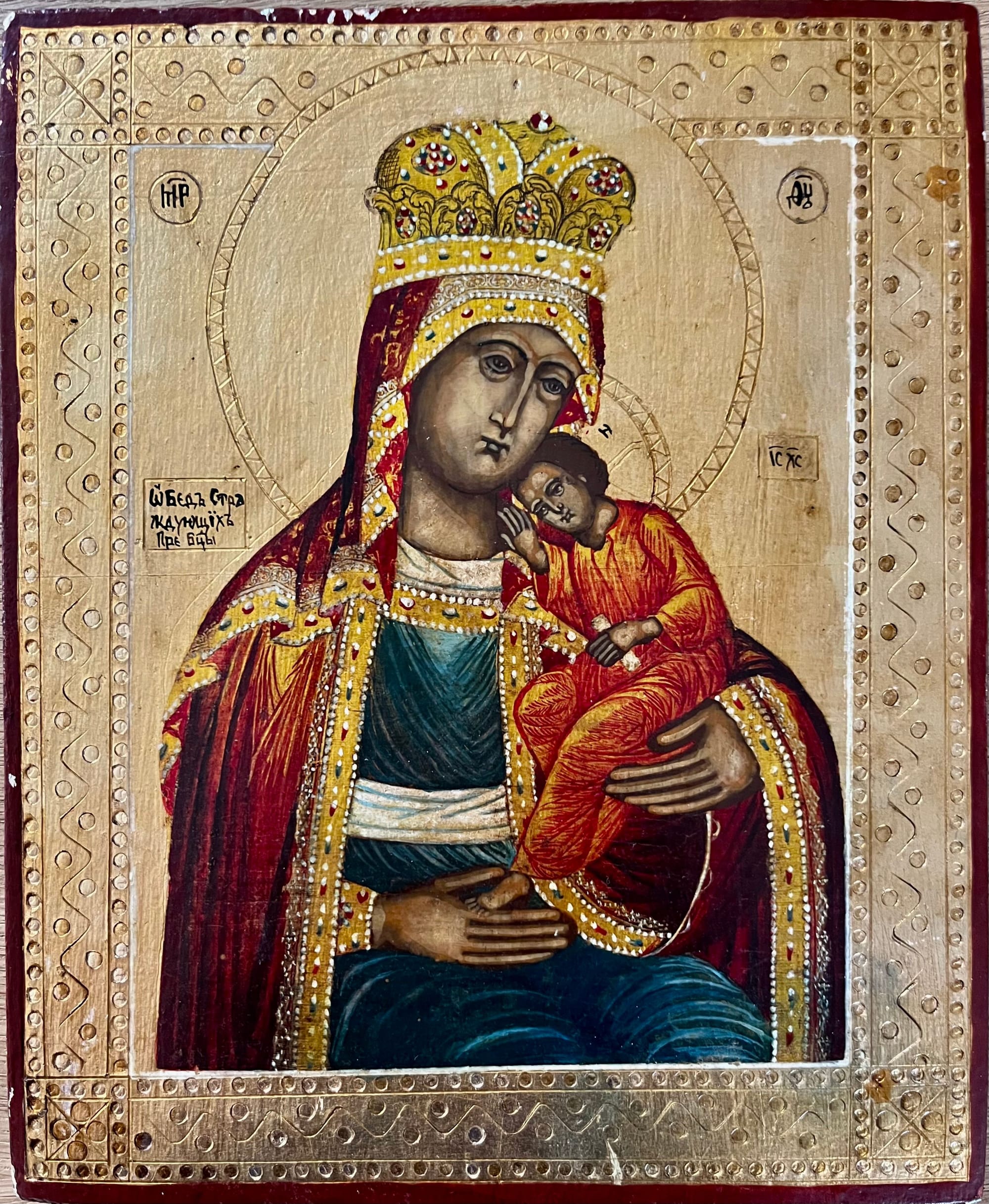Москва
Welcome to my Moscow gallery
I first visited Moscow in the autumn of 2000 and instantly fell in love with the city. Forget what people say about St Petersburg being Russia’s cultural capital—Moscow is a world of its own: vibrant, surprising, and endlessly rewarding. The Tretyakov Gallery, in my view, ranks among the top three galleries in the world. Its scale, depth, and emotional power left a lasting impression on me. This section showcases works by two students and an unknown 19th-century iconographer—lesser-known artists, perhaps, but no less worthy of attention.
St Basil's Cathedral and Red Square (from the west)
The detail and colour in this magnificent piece are breathtaking. The young student who painted it deserves real credit. It’s a reminder that beyond the grandeur of the Tretyakov Gallery and the Pushkin Museum, Moscow hums with the quiet brilliance of its street artists. This delicate watercolour captures a winter’s day in Red Square, with St Basil’s Cathedral rising in soft, pastel tones. Its kaleidoscope of domes offers a vibrant counterpoint to the Kremlin’s bold red paintwork on the left—both landmarks radiating colour and energy—set against the weathered, faded elegance of the GUM department store on the right. I bought this piece from a student artist on Repin Square—a quiet corner of the city where creativity spills out onto the pavements. It remains one of my most cherished finds from Moscow: intimate, atmospheric, and unmistakably Russian.

St Basil's Cathedral and Red Square (from the east)
I’d love to say that this view was painted by the same artist as the masterpiece above—but no. Moscow is full of talented artists, and this striking watercolour is a testament to that. The quality and depth of the brushwork are impressive, capturing Red Square on a crisp day with clarity and charm. In the background, between St Basil's and GUM, you’ll spot the Hotel Baltschug Kempinski—a grand building designed by Alexander Ivanov. But alas, not the same Ivanov who painted The Apparition of Christ Before the People, displayed in the Tretyakov Gallery, as can be seen in the painting below. It’s a curious coincidence: two men, two legacies, one name—yet their contributions to Moscow’s cultural landscape couldn’t be more different.

The Apparition of Christ to the People by Aleksandr Andreyevich Ivanov
This painting is featured and described more fully in my Christo gallery. I include it here because I purchased it in Moscow, shortly after seeing the original in all its magnificent glory at the Tretyakov Gallery. It’s a curious coincidence that Aleksandr Ivanov—the artist behind The Apparition of Christ Before the People—shares his name with the architect who designed the hotel depicted in the painting above!

Icon of Our Lady of the Deliverance of the Suffering
This 19th-century Russian icon, Our Lady of the Deliverance of the Suffering, is a beautifully rendered version of the original housed in the Tretyakov Gallery in Moscow. It depicts the Virgin Mary as a merciful intercessor, believed to offer relief from distress and misfortune. Painted in oil on gessoed wood, its flat perspective and gold accents reflect traditional Orthodox iconography. Like many icons of its time, it was likely created by an anonymous iconographer—part of a devotional tradition where spiritual meaning outweighed personal fame. I acquired this piece from an art dealer in Moscow, and it now sits above my piano, quietly watching over me. At times, it feels as though Our Lady herself is listening—and judging my playing!
